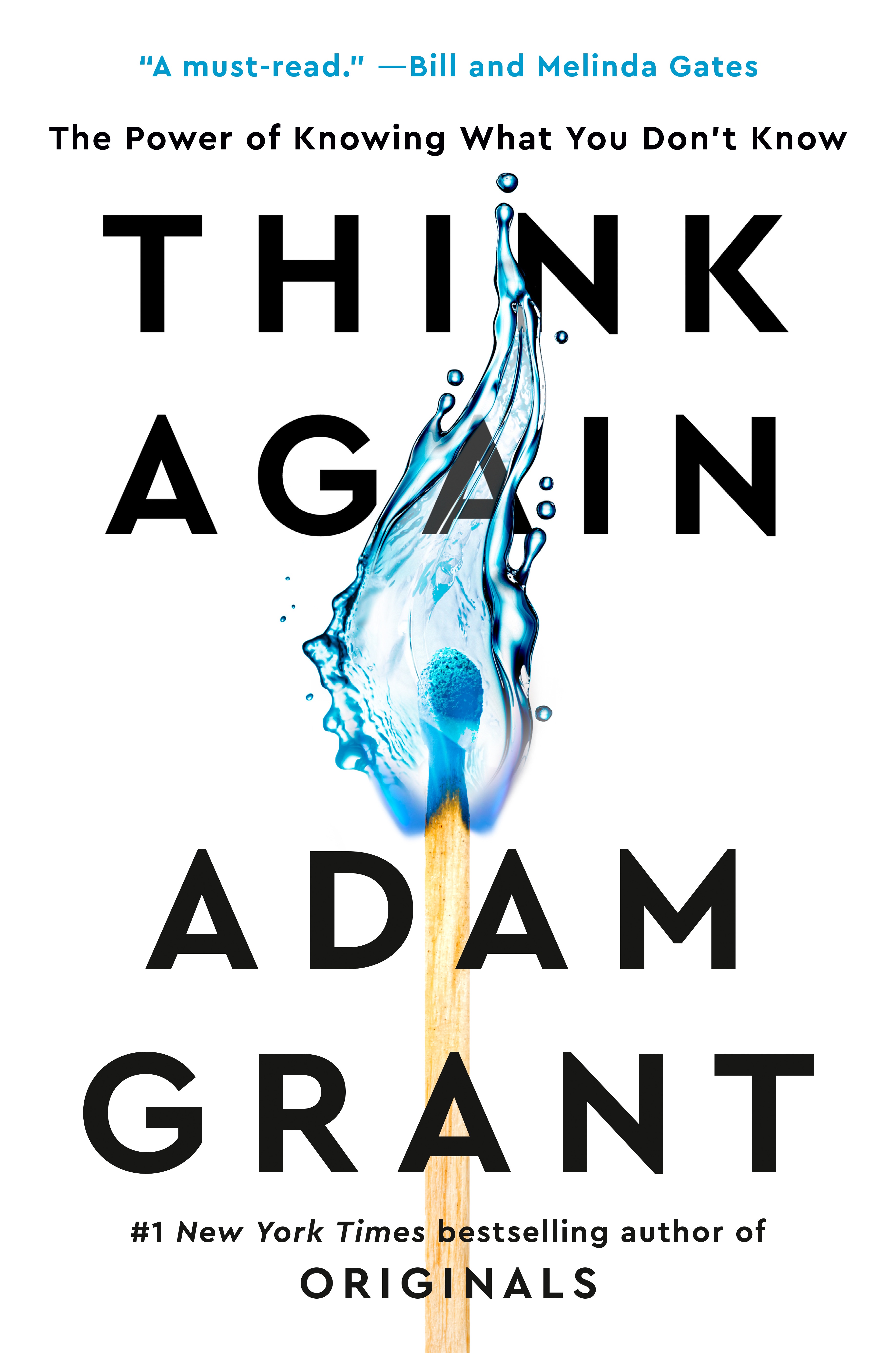Book review: Think Again by Adam Grant

Adam Grant’s “Think Again” is by far one of my favorite reads in recent memory. In this thought-provoking book, Grant doesn’t just challenge our beliefs; he reshapes the very way we approach decision-making, a transformation with profound implications for large organizations and their leaders.
Grant’s premise revolves around the concept of intellectual humility, the ability to recognize the limitations of one’s knowledge and the willingness to reconsider preconceived notions. This concept is nothing short of revolutionary when applied to the complex world of corporate leadership. In a rapidly changing business landscape, the ability to adapt and evolve is paramount, and “Think Again” provides a roadmap for achieving just that.
One of the book’s greatest strengths is its practicality. Grant offers tangible strategies for fostering a culture of intellectual humility within large organizations. From encouraging constructive dissent to embracing cognitive diversity, his insights are a goldmine for leaders seeking to harness the full potential of their teams. The book is filled with real-world examples and case studies that illustrate the transformative potential of rethinking. Whether it’s a story of a successful business leader who pivoted after realizing their initial strategy was flawed or a historical account of individuals who challenged the status quo and brought about significant change, Grant’s storytelling skills make complex concepts accessible and relatable.
“Think Again” delves into the importance of feedback and learning from failure, skills that are indispensable for effective leadership in any large organization. Grant’s compelling argument for creating environments where individuals feel safe to admit mistakes and challenge conventional wisdom is a game-changer for companies aiming to stay competitive and agile. The book also explores the concept of “premortems,” a strategy for anticipating and mitigating potential problems before they arise. This approach is particularly useful for large organizations, where the consequences of failure can be catastrophic.
Grant introduces the concept of “skeptic vs. denier” as a way to distinguish between two different approaches to questioning and changing one’s beliefs. A skeptic is someone who is open to new ideas and willing to consider alternative viewpoints, while a denier is someone who is closed-minded and unwilling to change their beliefs. The book argues that skeptics are more likely to succeed in the long run because they are open to new ideas and willing to change their beliefs when presented with new evidence. This concept is particularly relevant in the context of large organizations, where leaders must be willing to challenge the status quo and embrace change in order to stay competitive.
He also gives us the concepts of “preachers, prosecutors, and politicians” as archetypes representing different approaches to communication and persuasion. These archetypes shed light on how people engage in debates and discussions, and they provide insights into the strategies employed by individuals in various contexts. For example, a preacher is someone who tries to convince others of their beliefs by appealing to emotion and faith, while a prosecutor is someone who tries to convince others of their beliefs by appealing to logic and reason. A politician is someone who tries to convince others of their beliefs by appealing to both emotion and reason. These archetypes are useful for understanding how people communicate and persuade others, and they provide insights into the strategies employed by individuals in various contexts. The way to overcome those biases is to go into scientist mode, where you’re not trying to prove yourself right, but rather trying to find out what’s true. This is a powerful concept that can be applied to many different contexts, and it’s one of the most important takeaways from the book.
What makes “Think Again” so compelling is Grant’s own intellectual humility. He openly shares his own experiences of changing his mind on various topics, which makes the book feel refreshingly authentic. His writing style is engaging, and he effortlessly weaves together research findings, personal anecdotes, and thought-provoking exercises that encourage readers to apply the book’s principles in their own lives.
In a world where change is the only constant, “Think Again” equips leaders and managers in large organizations with the mental toolkit they need to thrive. It’s not just a book; it’s a call to action for a new era of leadership—one that embraces humility, adaptability, and continuous learning. If you’re in a position of leadership within a large organization, this book is nothing short of essential reading. Adam Grant has once again proven himself as a thought leader, and “Think Again” is his magnum opus in the realm of management and leadership. It’s an invaluable guide to creating a more agile, innovative, and successful organization.
Here are a few of my favorite quotes:
Mental horsepower doesn’t guarantee mental dexterity. No matter how much brainpower you have, if you lack the motivation to change your mind, you’ll miss many occasions to think again.
Who you are should be a question of what you value, not what you believe.
Changing your mind doesn’t make you a flip-flopper or a hypocrite. It means you were open to learning.
It takes confident humility to admit that we’re a work in progress. It shows that we care more about improving ourselves than proving ourselves.